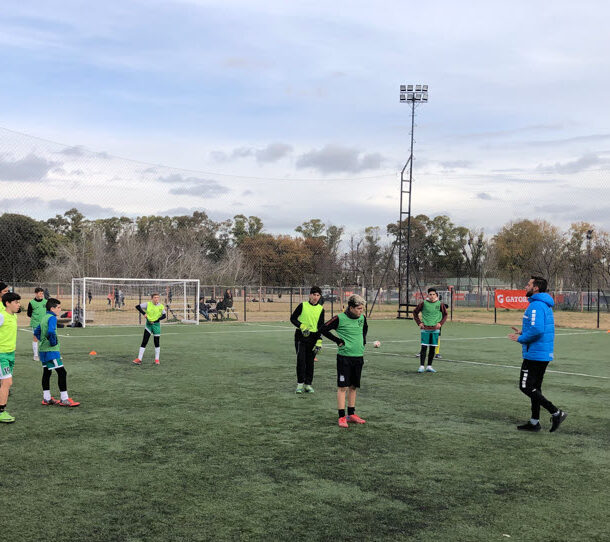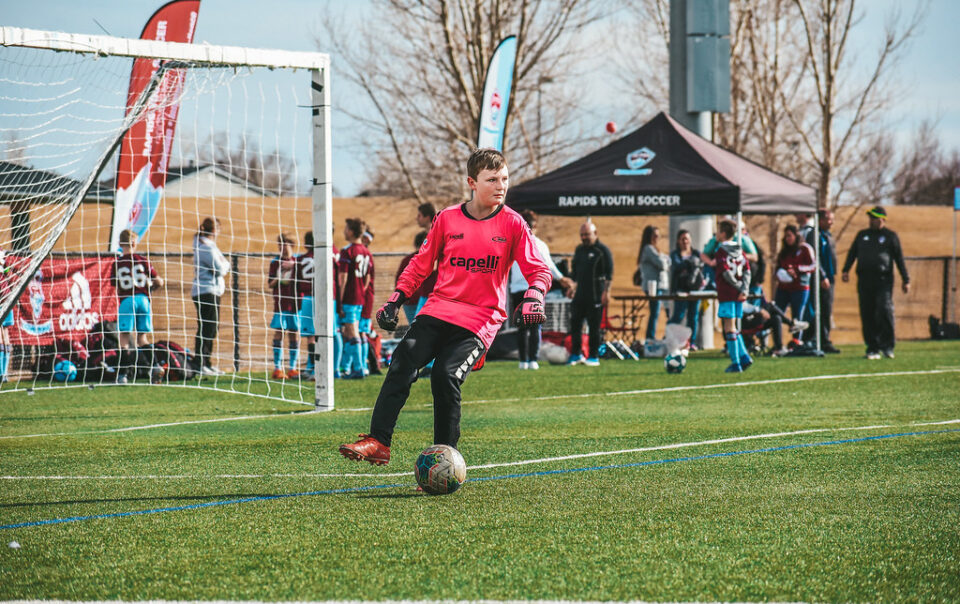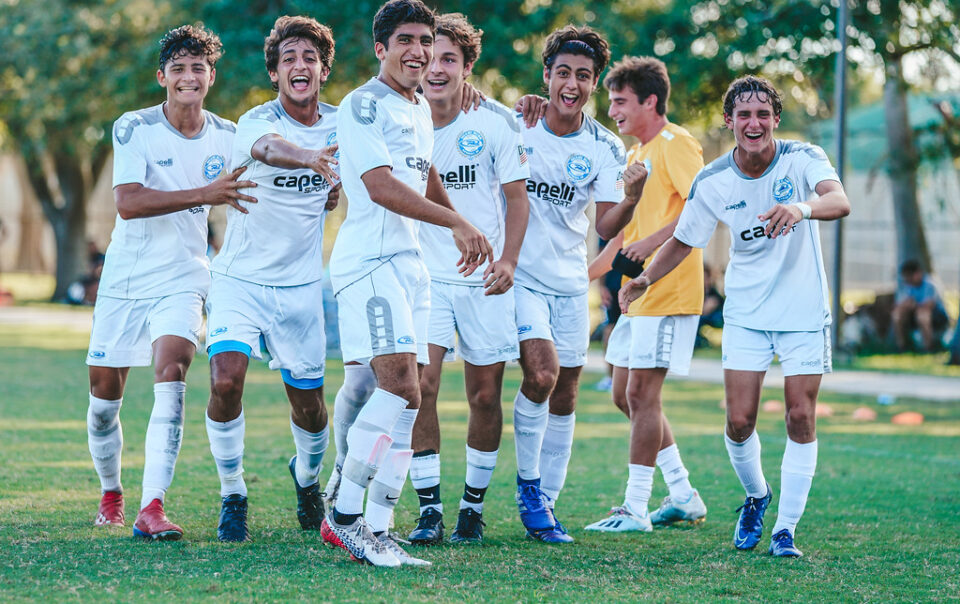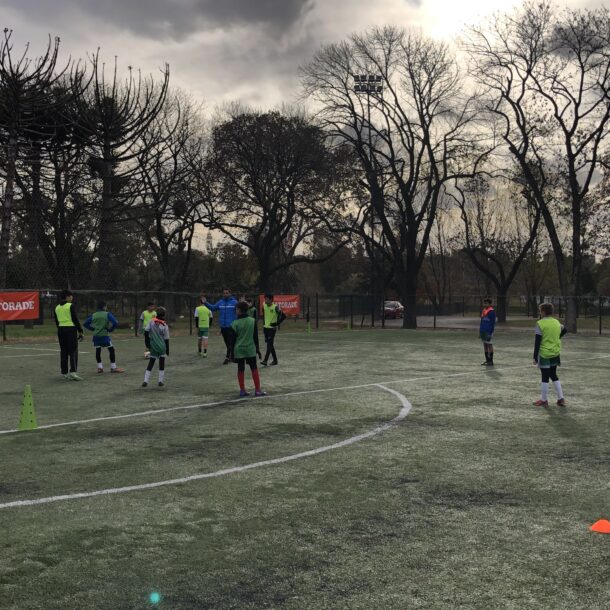
Este artículo fue escrito por Pablo Toledo, Director de Proyectos Deportivos de Rush Soccer.
Ok, here comes part II. If you haven’t read Part I, I’d suggest doing so prior to reading this article so you can get a good context to frame the following ideas.
As I was explaining in part I, our goal with these two teams is not to use the season plans ‘as is’ because we are cognizant that we are needing to build some foundations. Everything is new for our players right now, so we want a couple of classes in a row (or almost in a row) about new topics to settle the idea, and then do the same with other topics, returning to the previous ones frequently, but basically spacing topics out more as we notice that behaviors start settling.
As you saw in the previous post, for the first two weeks we decided to focus on basic rules of the game, foundational defensive concepts and ball skills (running with the ball using different surfaces). After that, we did our first assessment and we concluded that defensive concepts were still far from solid so we organized the following two weeks with these goals:
- Ensure defensive foundations.
- Introduce the idea of passing the ball.
- Encourage utilization of space (you’ve seen this, when they first come out of rec, they all just run after the ball as a big mass of players, so we want to start giving them notions about finding open space to receive).
And we came up with this two week training cycle:

Now let me tell you about the experience of running it. The first session, we actually decided to focus on basic coordination and agility skills in a competitive setting, to then let them play freely for about half of the session. The reasoning behind this was that the session took place after two weeks of introducing new concepts and the day after a big match, so we realized that the players (I should say these children) were just mentally tired and it was time to let them be for a day.
Agility and coordination are the two main physical valences I pursue in these ages until past puberty. In my opinion, this is instrumental to their development. We tend to do this twice a week for 5-10 minutes at the beginning of the session (it could be done at the end too), and to make it fun and competitive we separate them in teams and we play them as races.
In this Monday session, we decided to do it for longer and it worked well. Our reasoning behind it was that it required little thinking (no introductions of new concepts) so it would be a good fit.
The second session was great. That day, we play indoors in our club and I’m the only coach with both my groups simultaneously (about 18 players) so I’m always trying to find activities that keep everybody participating and engaged or it would get easily out of control. Then, my plan was to play 6v6 5’ games making three teams, winner stays on, for a bag of candy as the day trophy (great incentive at these stages LOL), but considering that I was pursuing to develop a specific topic (passing and spacing), I made a few tweaks on the game for the first 45 minutes. Here’s the field layout and rules of the game.

The line in the middle to use a rule of ‘flank players can’t cross to the other side when your team has the ball’ is one of my favorite tweaks at this stage. I literally call it out loud ‘FOUL!’ when somebody does. At the beginning the players hate it but after two or three sessions they get used to the idea really quickly, and you notice how they stop over sliding.
Now, let me tell you what my first mistake in this session was. The first rule (we play in three touches) to encourage passing was a bad idea. What the players started doing was not passing but actually shooting from almost midfield… So after 5-10 minutes I had to change and replace the rule for ‘your team needs three passes to be allowed to score’. Eureka, much much better. Now they were passing, which also led me to the opportunity of freezing it a few times to inquire what the players off the ball should be doing…
Answer: Find open space to receive
Me: Ok, great, and where’s that space now?
Answer: There, there, and there (pointing)
Me: Awesome, everybody show me, then, how you would do that.
Wonderful. I don’t want to make that a rule but personally, I do believe that at this age limiting touches is most frequently not the best alternative to get what you want.
Obviously, don’t use these things for the entire session. It will get old at some point and the players will be begging you to play with regular rules, but you can use it for the first 45 minutes let’s say, and then free it up. We repeated this session the following week (session five) when we played indoors again.
By the third session, here comes something interesting as far as planning, we decided to do a ‘Concepts Review’ session for defensive topics, so we focused on restating defensive concepts we had practiced within the first two weeks. ‘Nothing new’ was the rule, let’s reinforce the same. This is very interesting not in itself but because this was a prelude to the sixth session (the last one of the cycle) in which we decided to do a ‘Concepts Assessment’ session, in which we ran activities that required the application of the defensive concepts we had taught but our coaching behavior changed. In this case, we wouldn’t say anything and just observe to see if the players recalled the ideas by themselves and behaviors had changed. We were super happy with the result and pretty impressed about how much they already remembered and were doing on their own.
Now, here comes the most frequent mistake: Coaches, we see this and we think we are in good shape to just focus the rest of the season on other topics. No, unfortunately, they will start forgetting it. All it means at that moment is that they’re learning, but trust me you don’t want to scratch it off your list. Instead, add new reminders and checkpoints in the following training cycles but progressively increasing the spacing among them. We’ll practice these defensive topics again, but maybe now we’ll give it two weeks, and if it goes well and we still see the behaviors desired, next time we might give it three weeks or a full month. That’s what I mean by increasing the spacing.
Going back in time a little bit, let me tell you what session four was about. As said, we wanted to start introducing the idea of passing as well and we had done so at the second session when we played indoors but without the focus on technical execution or specific coaching points about the passing skill (we were trying to improve the usage of space, needed for effective passing), so now we had it in mind that we’d need to reinforce the idea of using the space and we wanted to pay close attention to the technical execution of those push passes (we limited to push passes in this cycle). Here is where I normally say that I like doing things the other way around. Most of the time I see coaches with this objective plan their sessions in stages in which they start with ‘technical work’ to then move onto ‘game-like – opposed environments’. I don’t think that’s always necessary, in fact, I rather start with a game-like scenario and check if the players are discovering the solutions or the techniques themselves. You know what I mean? Why fix something that I’m not even sure it’s broken? So we started with keep aways 3v3 + 2 Neutrals supporting the team on the ball with no specific rules. Diagram below (we started with two neutrals instead of one as shown).

Soon after I noticed that the level of success was very low, so we added a third neutral to play 3v3 + 3N. That made it a bit better. From here, I tried to encourage passing with progressive challenges. At the beginning, it was about ‘three passes to score a point’. Once they started scoring frequently, we said ‘now it’s five passes to score’. Now, the problem that after 10 minutes I was still having was that they wouldn’t spread out and utilize the space, so I had to tweak the activity and tried using one neutral inside and turning the other two neutrals into bumpers on the end lines (diagram modification below)

This helped a lot because it freed up some space inside and when I froze the exercise to ask about ‘where the open space is’ and ‘who’s the open player for us now’ it was easy for the players to point to the bumper on the opposite side.
Alright, I think that’s plenty for now. In part III I’ll show you how we run our first evaluation of progress and planned the following month based on it.
Hope it helps coach!











